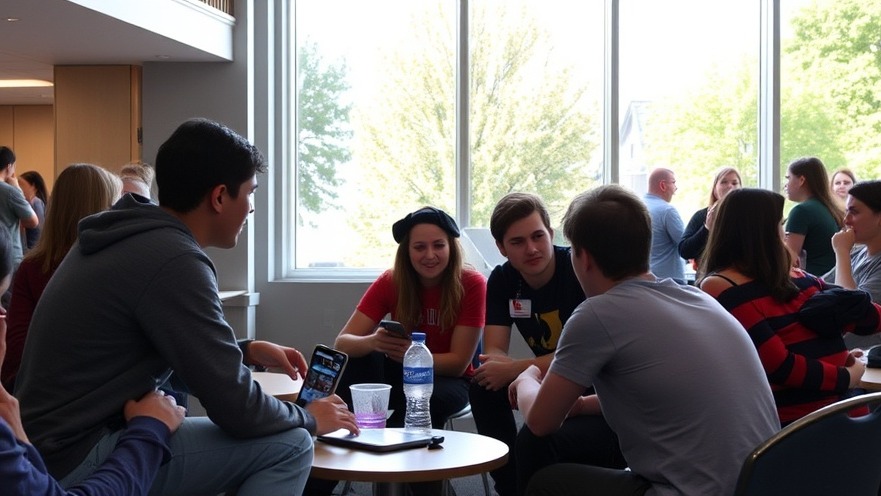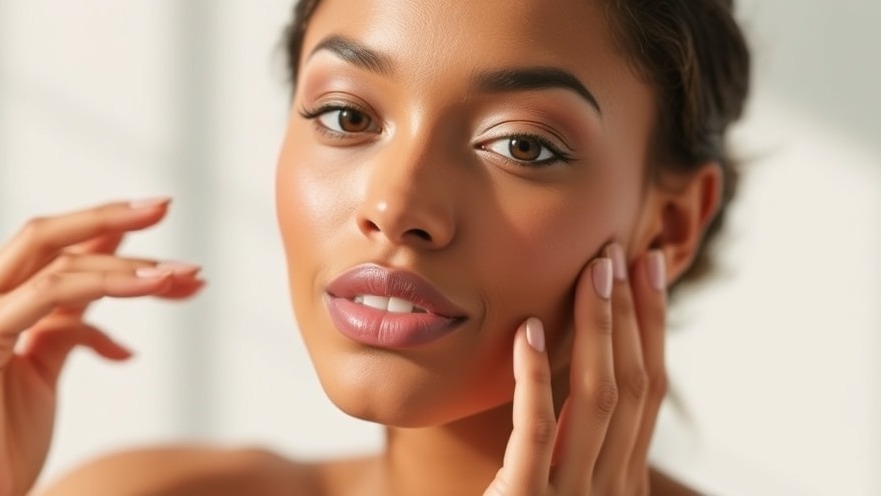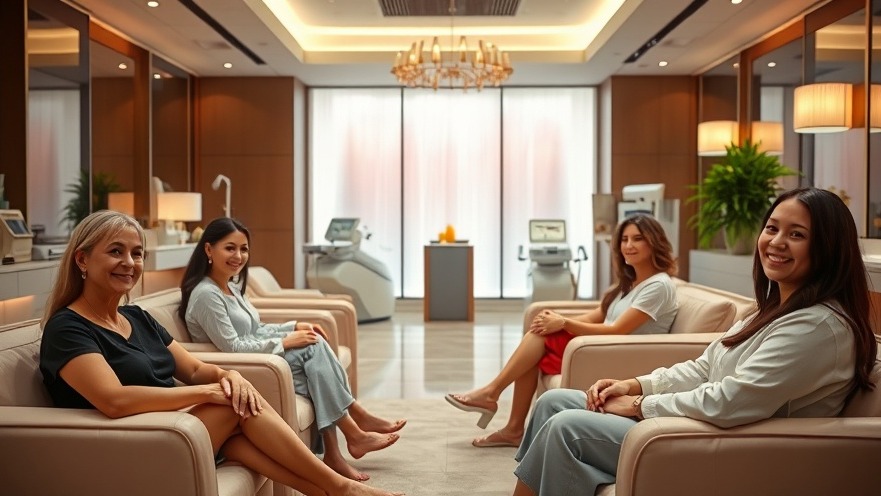
The New Face in the Spa Chair
It’s a quiet Saturday morning at a local wellness studio—but instead of the usual 40-something client arriving for a deep-tissue massage, a 16-year-old walks in for her monthly facial and guided breathwork session.
Her phone buzzes with a notification from TikTok—another skincare influencer going viral. She smiles, already ahead of the trend.
This isn’t a rare sight anymore. Across the country, Gen Z is redefining who the modern spa serves.
They're not just tagging along with mom for a mani-pedi—they’re booking their own appointments, researching treatments, and prioritizing wellness as early as middle school.
From LED facials to gua sha glow-ups, these young clients want more than beauty—they’re looking for balance, confidence, and clarity in a chaotic world.
“Younger guests are incredibly intentional,” says one esthetician who’s seen her teen clientele double in the past two years. “They’re not coming in because it’s trendy. They come in because they’re stressed, they want to learn, and they’re serious about taking care of themselves.”
So what exactly is drawing this generation to the spa chair? And how are businesses shifting to meet their needs—without compromising on ethics, education, or authenticity?
Where It All Began: The Roots of Gen Z Wellness
Born between the mid-1990s and early 2010s, Gen Z is growing up in a world that never really lets them unplug.
Social media, digital culture, and a 24/7 news cycle have left them more anxious and aware than any previous generation—but also more informed.
Wellness isn’t a luxury to them; it’s a necessity.
“For these younger clients, skincare isn’t about covering up—it’s about protecting their confidence,” says spa director Jasmine Liu. “They’re proactive. They’re asking about ingredients, about blue light, about long-term effects. It’s impressive.”
This shift didn’t happen overnight. The pandemic played a huge role in accelerating Gen Z’s relationship with self-care.
With stress levels rising, screen time at an all-time high, and physical activity limited, wellness rituals became a coping mechanism.
Spa visits became extensions of what they were already seeing on YouTube and TikTok—self-care routines, acne journeys, guided meditations.
And many parents, watching their teens struggle through the mental toll of isolation, supported this shift wholeheartedly.

Turning Points: What Changed the Industry
In the years following the pandemic, spa professionals noticed a striking trend: teens weren’t just joining their parents’ appointments—they were booking their own.
LED facials and customized acne treatments rose in popularity among 13- to 18-year-olds.
Holistic practices like crystal therapy, sound baths, and breathwork became teen-friendly services.
One spa owner in Sacramento noted a 60% increase in clients under 21 since 2022.
At the same time, TikTok exploded with spa-related content: #facialtreatment, #skincareroutine, #lymphaticmassage.
One viral post about a teen spa day in Miami racked up over 4 million views, sparking local and national buzz.
With this came a challenge for spa owners: how do you serve a generation that values authenticity and transparency above all?
Many adapted by creating teen-specific menus, partnering with dermatologists for education-based skincare, and focusing on community-oriented wellness instead of pure aesthetics.
The shift wasn’t just cosmetic—it was cultural.
The Spa as a Classroom: Core Insights and Innovations
Gen Z isn’t looking for cookie-cutter treatments. They want understanding. Spas that cater to this demographic have leaned into education as a core service.
Staff are trained not just in services, but in ingredient knowledge, hormonal skin cycles, and how to speak to younger clients (and their parents) with empathy.
New technologies have helped, too. AI-powered skin analysis tools give these clients a data-backed view of what’s going on under the surface.
Services like LED light therapy and oxygen facials feel modern and tech-forward—a natural fit for a digitally native generation.
Wellness itself has also expanded to mean more than just skin.
Meditation sessions, breathwork, mocktail-fueled sound baths, and even teen journaling nights are becoming staples at progressive wellness centers.
And yes, aesthetics still matter—but Gen Z also values how the spa makes them feel.
Is it inclusive? Is it eco-conscious? Does it feel like a space they can be themselves?

What Sets Gen Z Wellness Apart
Unlike the millennial obsession with optimization and hustle culture, Gen Z leans into what the Global Wellness Institute calls “softcare.”
That means gentle, joy-based, emotionally safe wellness. They aren’t chasing perfection. They’re chasing presence.
That’s why spas that lead with authenticity win. No stock photos. No scripted sales pitches.
Instead, Gen Z prefers behind-the-scenes videos from their esthetician, Q&A sessions about skincare myths, and honest reviews about what works and what doesn’t.
Another difference? Gen Z is deeply value-driven.
They care if your products are cruelty-free, if your spa uses refillable jars, and if your staff reflects the diversity they see in their daily lives.
Spas that understand this aren’t just growing—they’re building lifelong relationships with their youngest guests.
Real Takeaways for Spa Owners
If you want to build trust with younger clients, start here:
Create a Teen Wellness Starter Kit Offer a menu that focuses on beginner-friendly services like cleansing facials, skin education sessions, and simple stress-relief options.
Use Your Platform Post videos that show your staff’s personality. Show the treatment process. Use your voice instead of a marketing script.
Train Your Team Differently Educate practitioners on how to communicate with teens respectfully and informatively. Teen clients want to feel seen, not lectured.
Make the Space Shareable Think cozy lighting, modern decor, and places to take a selfie without feeling cheesy.
Prioritize Transparency Explain ingredients. Be clear about pricing. Offer treatment roadmaps instead of quick fixes.
These aren’t just service tweaks. They’re culture shifts. And they matter.

The Takeaway: Meeting Gen Z Where They Are
If there’s one thing spa owners and wellness professionals should understand about Gen Z, it’s this:
They’re not just consumers — they’re conscious creators of their own wellness journeys. They come in asking questions, seeking education, and expecting values to match service.
They crave personalization, emotional safety, and a sense of agency.
“They’re not just looking for results—they’re looking for trust,” says Jasmine Liu. “When we meet them with care, clarity, and openness, we gain lifelong clients, not just appointments.”
So what can spa owners do today?
Rethink the spa experience as a mentorship moment, not just a transaction.
Build transparency into everything — pricing, products, and processes.
Stay visible and real on platforms where Gen Z lives: TikTok, Instagram, YouTube Shorts.
Design your space and your services to reflect empathy, not just aesthetics.
Gen Z is inviting the wellness world into a more intentional, inclusive future.
Spas that rise to meet them—with heart, humility, and honest guidance—will not only stand out in a crowded market, they’ll stand for something that matters.
Now is the time to evolve. Because the next generation isn’t just ready—they’re already walking through your door.
 Add Row
Add Row  Add
Add 




Write A Comment